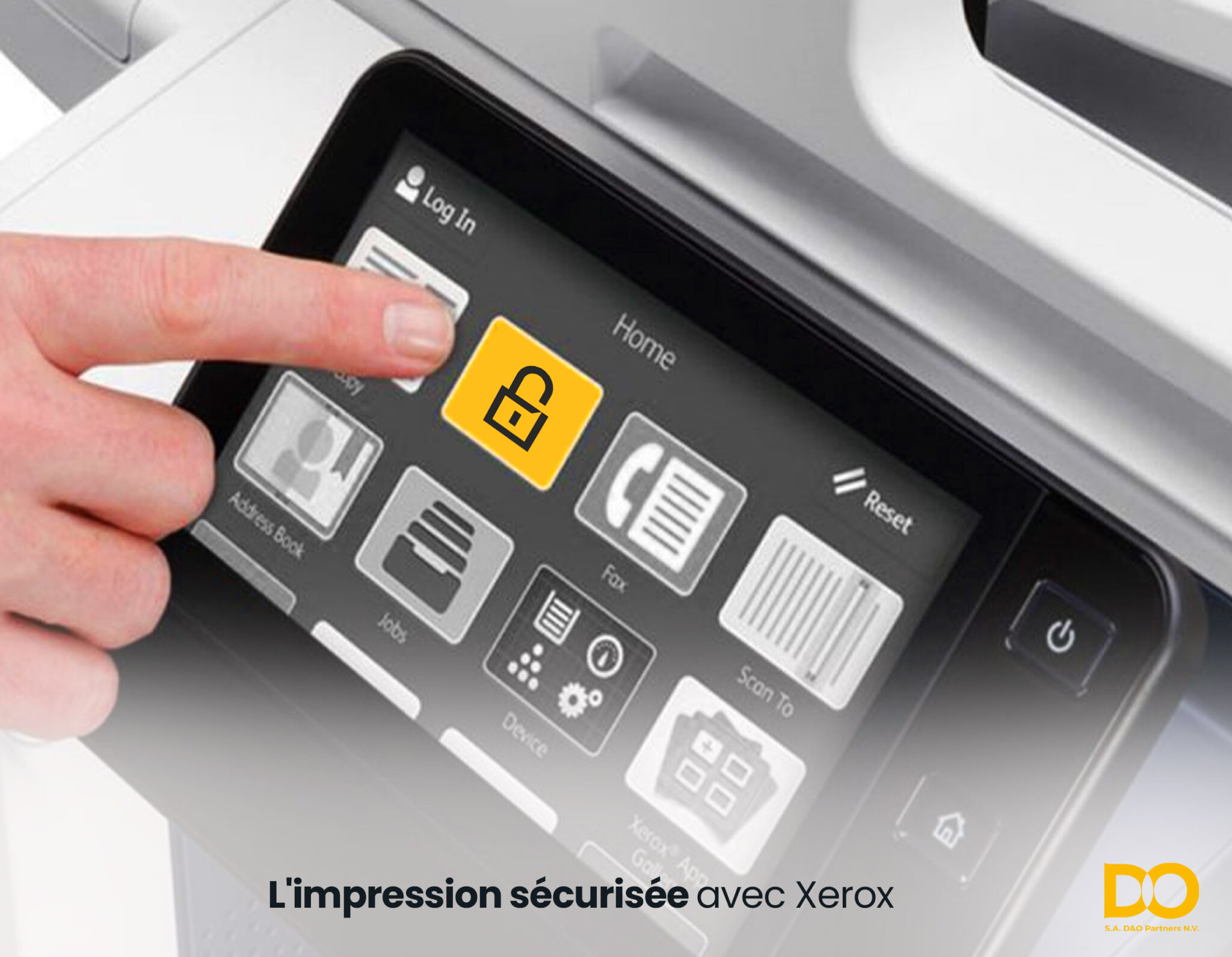In today’s digital world, secure printing is of paramount importance to safeguard sensitive file data from tampering or unauthorized access. Xerox’s portfolio of protection solutions offers a comprehensive approach to secure printing solutions that enable you to protect your confidential documents throughout the printing process. These include “follow me” printing, enabling users to print their sensitive documents on any network printer after logging in, and use advanced encryption protocols to prevent access to print data by unauthorized users. With such measures, companies mitigate the risks associated with unsecured printing and preserve the integrity of their information.
Understanding the dangers of printer safety
Due to the ever-increasing use of paper, multifunction printers are indispensable in offices around the world, but they present significant security risks if they are not responsibly protected. Because of their often overlooked role in the IT infrastructure, they are a prime target for cybercriminals, and can quickly become vectors for spreading malware throughout a company’s intranet. It is therefore essential to familiarize yourself with the most common attack techniques against printers, and to implement robust security protocols to mitigate these risks.
Printers: an integral part of the network infrastructure
Non-IT accessories, such as connected printers and MFPs, are essential for many businesses. However, without adequate precautions, they represent a significant cybersecurity risk. Many companies admit that they do not activate the appropriate security measures for their multifunction printers, mainly because they are considered too restrictive. What’s more, security issues are often dealt with superficially, without resolving the underlying vulnerabilities.
Vulnerabilities and potential threats
An inadequate security policy can lead to data breaches, particularly when sensitive documents are printed unsecured. This type of breach offers malicious actors the opportunity not only to gain access to confidential information, but also to significantly disrupt business operations.
The importance of securing multifunction printers
Securing these printers is crucial, as they represent a prime target for cybercriminals seeking to infiltrate a company’s network. These hackers exploit the vulnerabilities of these devices to steal information or cause significant damage. To reduce these threats, and so protect your documents, it’s essential to implement secure printing practices and keep firmware up to date. This includes changing default passwords and enabling access controls. By following these best practices, companies can strengthen the protection of their printing devices, securing their network and sensitive data against cyber-attacks.
Xerox’s global approach to data security
Xerox takes a comprehensive security approach to securing its devices and controlling sensitive elements. This includes hardware and software protection, partnerships with industry leaders and a four-step holistic protection strategy.
Hardware and software protection
Xerox’s protection measures start with user authentication by pin code or password to ensure that only authorized people use the devices. Role-based access control restricts access according to user functions. Digitally signed system applications prevent the installation of infected versions, and encrypted keys stored on TPM chips protect against cyber-attacks. Firmware verification tests alert to malicious modifications, and whitelist/authorized list technology prevents the execution of unapproved software.
Partnerships with industry leaders in print security
Xerox collaborates with leaders such as Trellix and Cisco to integrate their expertise into its printing solutions. Xerox machines integrate with Cisco’s Identity Services Engine to enforce compliance and security policies, and communicate real-time event data with leading SIEM tools for early breach detection.
A comprehensive four-stage safety strategy
Xerox’s global approach to security is based on four strategic pillars:
- Fundamental protection: basic capabilities such as connection protocols and access controls are built into every connected device.
- Functional protection: specific requirements for device functions such as scanning, faxing and e-mailing are fully taken into account.
- Advanced protection: for sensitive environments, Xerox offers system solutions to restrict access, track and protect confidential data.
- 4. Usable protection: Xerox’s user-friendly features are easy to configure and integrate seamlessly into everyday workflows.
Installation, configuration and data protection for Xerox printers
Initial installation and configuration
To implement secure printing practices with Xerox machines, it is essential to ensure that protection settings are correctly configured during the initial installation of the printer and the applications installed on it. Xerox offers several security profiles, ranging from “none” to “high”, which restrict access to various device and operating system services. The administrator can activate the desired profile and set it as default, ensuring that protective measures remain in place even after reboots and system updates.
Wired and wireless network security
Xerox recommends disk encryption to secure data stored on hard disks (HDDs) or SSDs. Xerox products use 256-bit AES encryption, making data unreadable without the corresponding key. The devices also use reliable encryption key storage methods, such as TPM, for enhanced protection.
User access control
Secure printing requires access and authorization management. Xerox machines enable administrators to create customized user roles with specific authorizations, limiting access to certain functions through authentication, such as scanning, printing in single-sided or full color, selecting paper trays or accessing embedded applications. Administrators can also restrict access to tools and configuration settings according to user roles.
Data encryption and deletion
Xerox devices offer additional measures such as Immediate Image Overwrite (IIO) and On-Demand Image Overwrite (ODIO). IIO overwrites temporary files after each job, while ODIO overwrites entire partitions according to a schedule. Xerox recommends using IIO and scheduling ODIO during low-use periods to delete remaining data, including unclaimed secure print jobs.
Protect confidential documents with Xerox advanced print security
Xerox secure printing solutions are designed to protect sensitive information and mitigate risk. By implementing robust measures such as user authentication, file encryption and secure deletion functions, companies can preserve the confidentiality and integrity of their data. Xerox’s comprehensive approach, including hardware and software protection, partnerships with industry leaders and a four-stage strategy, ensures effective resistance against cyber threats and guarantees secure printing.
D&O Partners highlights the importance of secure printing in today’s digital landscape, and demonstrates how Xerox solutions help ensure the security of confidential documents throughout the printing process. By using Xerox solutions, businesses benefit from enhanced protection, reduced vulnerabilities and the peace of mind that their sensitive information is protected from unauthorized access and breaches.
Don’t hesitate to contact D&O Partners for more information on secure printing. One of our experts will welcome you with open arms and be happy to help.

